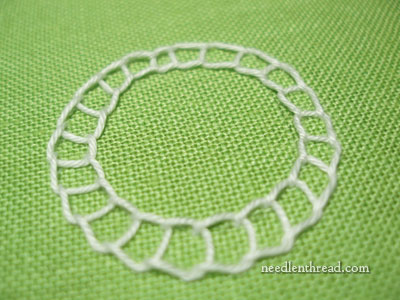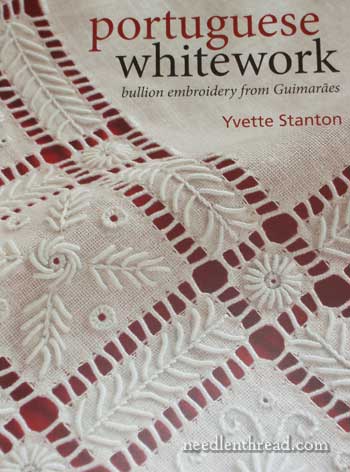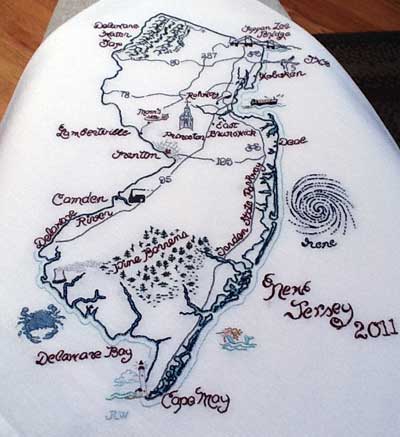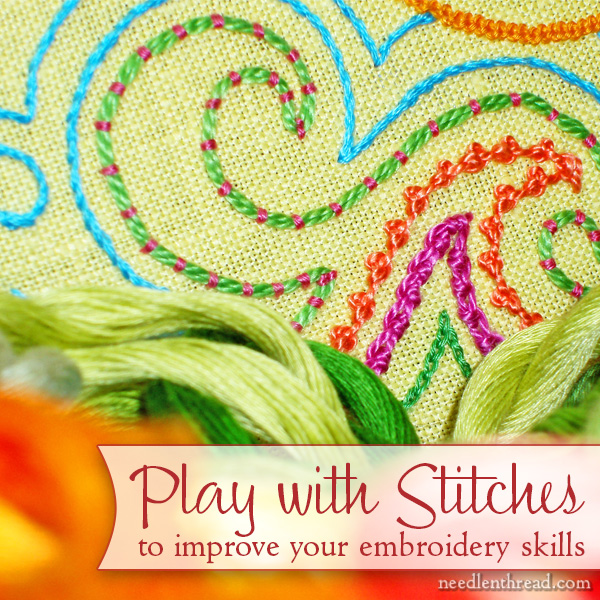June 16, 2012
Portuguese Whitework Winner!
We have a winner for the Portuguese Whitework book give-away that was announced earlier this week!

June 16, 2012
We have a winner for the Portuguese Whitework book give-away that was announced earlier this week!

June 15, 2012
The open chain stitch works well on lines, curves, and circles. It creates a square-looking stitch if space is left between the individual stitches, but you can also close up the open space between the stitches, to create a more solid-looking line.

June 14, 2012
June 13, 2012
Today, courtesy of Yvette Stanton, I’m giving away another copy of Portuguese Whitework: Bullion Embroidery from Guimarães. If you’d like to know what this book is all about, and what it can teach you about hand embroidery, you’re welcome to read my review of this book that focuses on a beautiful whitework technique.

June 12, 2012
The laced backstitch used in hand embroidery is somewhat like the whipped backstitch. To create the laced backstitch, the needle passes under a line of previously stitched backstitches, but instead of always passing under the stitches in the same direction, the laced backstitch passes under in alternate directions from stitch to stitch. To put it really simply, the needle goes up under one stitch and down under the next.

June 11, 2012
Here’s a bit of embroidery inspiration for you from Judith, a reader here on Needle ‘n Thread. I love this, and I think it’s a terrific idea for a hand embroidery project.

June 8, 2012
Lately, I’ve been playing a lot – probably too much. There’s some serious work going on in my stitching world, too, but what’s been occupying me most pleasurably is the whole notion of Play.
